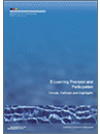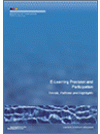This report analyses tertiary sector e-Learning provision at a system, sub-sector and course level from 2004 to 2008. The sub-sectors focused on in the report are universities and polytechnics and the course levels bachelors degrees and certificates (Levels 1-4). Participation in e-Learning course at these levels over the same time period is analysed by focusing on the following learner groups: 18-19 year olds, the 40+ age group, Māori, Pasifika and European and females and males.
Key Results
- Across the whole system e-Learning represented less than half of all provision. However the proportion of e-Learning rose between 2004 and 2008. In 2008, 48 percent of all provision had an e-Learning component.
- e-Learning is widely available at higher qualification levels, but much less so at lower levels. For bachelors degrees, there was growth in e-Learning provision over the period 2004-2008 but for certificates, e-Learning availability declined.
- e-Learning was more widely available in some parts of the sector than others. For example polytechnics had the majority of their bachelors degree provision in No Access. But in universities most of their degree level provision had an e-Learning component.
- If we look at the type of e-Learning provision Web-Supported was the largest category at both degree and certificate level. Web-Based was the smallest category in degree level provision and at certificate level.
- The 18-19 year old age group had a higher participation rate in e-Learning than other age groups. Pasifika had higher e-Learning participation at both degree and certificate level than Māori and Europeans. Māori had the lowest e-Learning participation.
- Males had higher e-Learning participation than females in bachelors degrees. But, in certificates, females had higher e-Learning participation than males.


